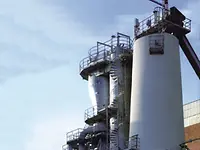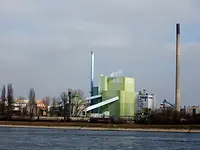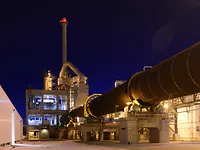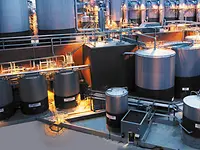Is this the very best showcase of sustainability at an integrated pulp and paper mill?
A major step to reduce carbon footprint in pulp mills
Biomass Gasification for Lime Kilns — Going fossil fuel free is an urgent sustainability topic that has become even more critical due to the current global energy crisis. It is clear we must reduce our dependence on fossil fuel.
The largest heat demand in a kraft pulp mill comes from the lime kiln and gasification is a prime solution to reduce the usage of fossil fuels.
Jean Taillon, Director Business Development of Gasification at ANDRITZ, says, “With the high price of oil and natural gas, as well as carbon pricing and low biomass costs, there is a real push for the replacement of fossil fuel used in lime kilns.
“Pulp mills are in an ideal situation to introduce gasification due to their ability to source woody biomass efficiently.”
The biomass Taillon refers to is mostly a low-cost biomass side stream from the woodyard at a pulp mill, for example, bark and chip screening rejects of various species that are ideal for the gasification process.

THE GASIFICATION PROCESS
A typical gasification plant package supplied by ANDRITZ is mainly composed of a belt dryer, biomass handling equipment, gasification plant with some auxiliary systems, and lime kiln burner (for existing lime kilns).
“This is really a benefit that all of these areas are in-house technologies at ANDRITZ and that the gasification, lime kiln, and causticizing processes are supplied by the white liquor plant product group with common technology and project execution resources,” says Taillon.
Typically, wet biomass is fed to the dryer. The initial moisture may be as high as 60%-w and dried to as low as 5%-w. The dried biomass is then conveyed through a flight chain conveyor to minimize the distance between the dryer and the gasification plant.
The gasifier itself is an air-blown, circulating, fluidized bed (CFB) gasifier operating at atmospheric pressure. “The purpose of gasification is to convert the carbon from the biomass into a combustible gas, called product gas,” says Taillon. “In simple terms, to do this, a small quantity of air is used, just enough air to create some heat but not enough to fully oxidize the carbon so as to be able to deliver a combustible gas composed mainly of H2, CO, and CH4.”
A gasification plant is equipped with various subsystems, such as heat supply to dry the wet biomass, biomass handling to feed the material, bed material feeding to help the fluidization of the biomass inside the reactor, start-up burner — also an in-house technology — to warm up the reactor when cold, gasification air to provide the necessary air to favor the thermo-chemical gasification reactions. Hot air from the lime kiln sector cooler can be used.
Plant safety also plays an important role in the design of the overall plant to fulfill EU Machine Directives and various HAZOP reviews.

Biomass Gasification for Lime Kilns
GASIFICATION AT PULP MILLS: A TREND FOR THE FUTURE
ANDRITZ’s references currently in operation are at Metsä Fibre, Joutseno (48 MW) in Finland, Chenming Group Zhanjiang (65 MW) and Meilun (80 MW) mills in China and Klabin, and Ortigueira (51 MW) in Brazil. Deliveries under project execution are Suzano Ribas do Rio Pardo in Brazil and Liansheng (largest CFB capacity in the world) in China.
“Biomass gasification for lime kilns was used in the 80’s and 90’s followed by a long pause in the market,” says Taillon. “However, as the usage of fossil fuels came under the spotlight, we have seen renewed interest for lime kiln biomass gasification. This message can be heard from many other actors and consultants to pulp mills' owners. So we believe this technology will be used more and more in kraft pulp mills around the world," concludes Taillon.
GETTING TECHNICAL
Gasification is the combination of various thermo-chemical reactions of biomass with air under sub-stoichiometric conditions. The energy in the product gas is approximately 5-7 MJ/Nm3 where approximately 80% comes from the chemical content of the product gas in the form of H2, CO, CH4. The rest of the energy comes from the high temperature of the product gas and the unburnt carbon contained in the product gas. Finally, the product gas is fed and burned in the multi-fuel lime kiln burner.







